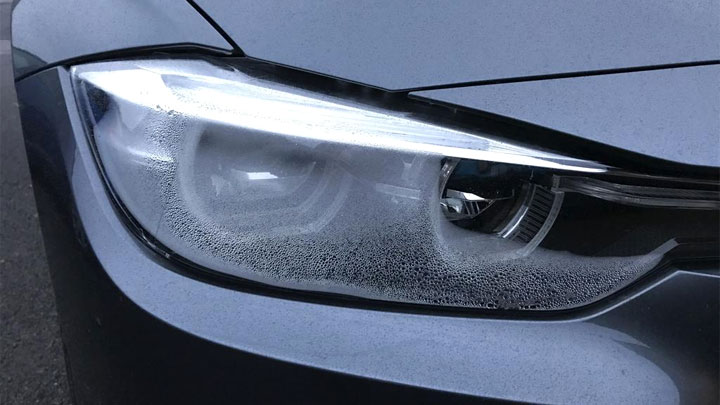Condensation inside car headlights is a common issue that many drivers face, especially during humid or rainy weather conditions. While it may seem harmless, in certain circumstances, it can impair visibility and compromise road safety. Understanding why condensation occurs and learning effective ways to prevent it is crucial for every vehicle owner.
Why Does Condensation Occur?

Condensation inside car headlights happens when moist air comes into contact with a cooler surface. This occurs frequently in vehicles due to temperature variations and the design of the headlight housing. When the warm air inside the headlight cools down, moisture from the air forms droplets on the interior surface of the headlight lens, creating condensation.
Related: Reflector vs Projector Headlamps
Several factors contribute to this phenomenon, such as temperature fluctuations, damaged or improperly sealed headlights, or even a minor crack or gap in the housing. Additionally, poor ventilation and low-quality sealing materials can exacerbate the problem.
Effects of Condensation on Headlights
Condensation not only reduces the brightness of headlights but also causes various issues. Over time, it can lead to fogging or cloudiness inside the lens, diminishing the intensity of the light beam. This compromised visibility can be dangerous, especially during night driving or adverse weather conditions. Moreover, condensation may also damage the internal electrical components, leading to more significant issues and costly repairs.
Preventing Condensation in Car Headlights
To prevent any undesired fogging, you must first identify the source of the issue:
Blocked vents
Some headlamps contain vents that can be opened or closed to accommodate changes in air pressure, but with time, road dirt and debris can clog these openings. In the event that these vents are clogged, condensation may develop as a result of retained moisture inside the headlight. Make sure your vents aren’t blocked by congestion.
Related: When to Use High-Beam and Low-Beam Headlights
Your vehicle’s make and model will determine exactly where these vents are located, but you should be able to discover this information in your owner’s handbook. If necessary, you can remove any debris by wiping the vent or blowing it out with compressed air. To remove it, you’ll need to break the seal, so be careful not to push it into the headlight housing.
Damaged seal
Your headlamp seal connects the main lens to the back casing and guarantees that the complete headlight assembly is airtight and waterproof. If this seal is damaged or wrongly installed, moisture can enter the headlight unit and cause condensation.
Stone chip holes or cracks in the lens
Your headlights are likely to wear out over time; any small stones or other debris flung up from the road surface as you drive can cause holes and cracks in the casing and lens. These holes and fissures allow moisture to enter, which can lead to condensation. If this is the case, and the lens has considerable damage, you may need to replace the entire headlamp unit.

Condensation inside car headlights is a common issue, but it can be effectively managed with proper maintenance and care. The key to preventing moisture development inside the headlight housing is regular inspections, appropriate sealing, and enough ventilation. By taking these measures, drivers can maintain good visibility and road safety even in adverse weather conditions.

I don’t eat, sleep or dream of cars, I am just someone who loves to see, think & write about cars. I love Ferrari in Pink but they won’t make one for me. I use X to write my full name, but that doesn’t mean I’m inspired by Altis X, in fact, my dad hates it 😀 Btw I’m an occasional writer so don’t expect too much from me 🙂




